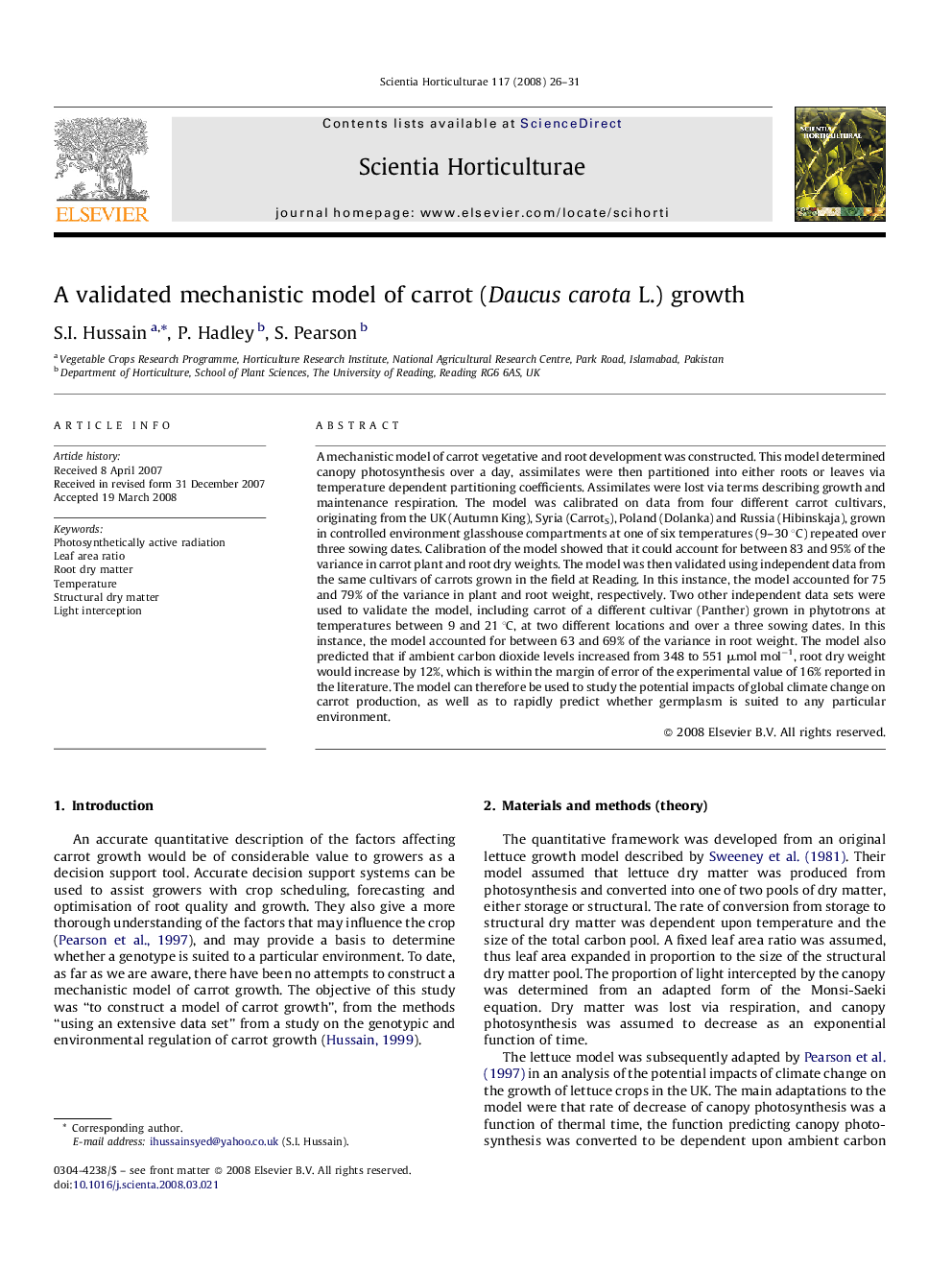| Article ID | Journal | Published Year | Pages | File Type |
|---|---|---|---|---|
| 4569577 | Scientia Horticulturae | 2008 | 6 Pages |
A mechanistic model of carrot vegetative and root development was constructed. This model determined canopy photosynthesis over a day, assimilates were then partitioned into either roots or leaves via temperature dependent partitioning coefficients. Assimilates were lost via terms describing growth and maintenance respiration. The model was calibrated on data from four different carrot cultivars, originating from the UK (Autumn King), Syria (CarrotS), Poland (Dolanka) and Russia (Hibinskaja), grown in controlled environment glasshouse compartments at one of six temperatures (9–30 °C) repeated over three sowing dates. Calibration of the model showed that it could account for between 83 and 95% of the variance in carrot plant and root dry weights. The model was then validated using independent data from the same cultivars of carrots grown in the field at Reading. In this instance, the model accounted for 75 and 79% of the variance in plant and root weight, respectively. Two other independent data sets were used to validate the model, including carrot of a different cultivar (Panther) grown in phytotrons at temperatures between 9 and 21 °C, at two different locations and over a three sowing dates. In this instance, the model accounted for between 63 and 69% of the variance in root weight. The model also predicted that if ambient carbon dioxide levels increased from 348 to 551 μmol mol−1, root dry weight would increase by 12%, which is within the margin of error of the experimental value of 16% reported in the literature. The model can therefore be used to study the potential impacts of global climate change on carrot production, as well as to rapidly predict whether germplasm is suited to any particular environment.
